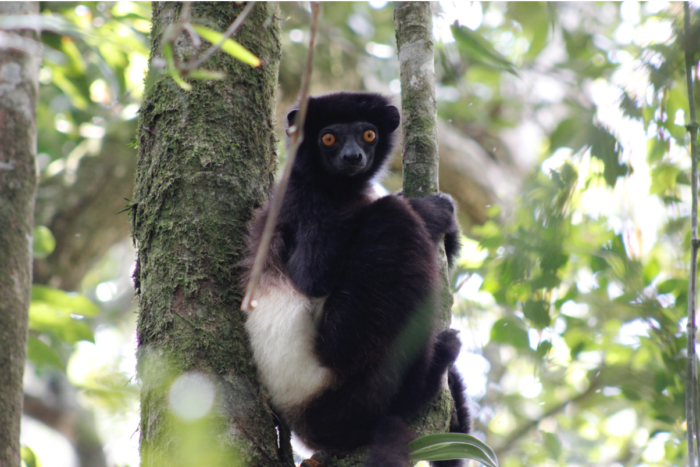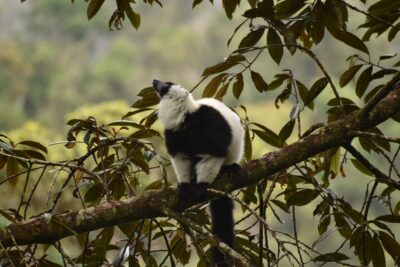
Zoos and aquariums receive over 700 million visitors worldwide each year (Gussett and Dick, 2011). Visitors are inspired to learn about animals and their conservation through their experiences at zoos, and many later seek out more information about the animals online. Zoo websites provide an additional opportunity to inspire people to love lemurs and support their conservation.
On this page, we provide guidelines for zoos to consider when creating web pages about lemurs.
Guidelines for Text about Lemurs on Zoo Websites
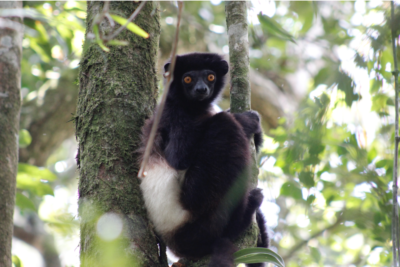
When writing text about lemurs, we recommend that zoos provide context, including where they live and what threats they face, as well as conservation solutions being implemented in Madagascar to address those threats.
To inspire people to take action, we recommend including ways that individuals can help save lemurs from extinction. Including solutions reduces the hopelessness that people often feel when learning about wildlife conservation (Park et al. 2020).
Keep the below points in mind when writing about lemurs.
Key Information about Lemurs
- Endemic to Madagascar. Lemurs are found naturally only on the island of Madagascar in southeast Africa. Madagascar is a very large island with many habitats, from rainforests to the spiny desert to dry deciduous forests. More facts about lemurs.
- Abundance of species. While many recognize a handful of species seen at zoos, there are actually over 100 species of lemurs. In fact, 112 species are recognized by science as of December 2022.
- Endangered status. Lemurs are the world’s most endangered group of mammals (Schwitzer et al. 2013). According to the 2020 Red List assessment, 98% of lemur species are endangered and 31% are critically endangered, which is one step away from extinction in the wild.
Threats and Solutions for Lemurs
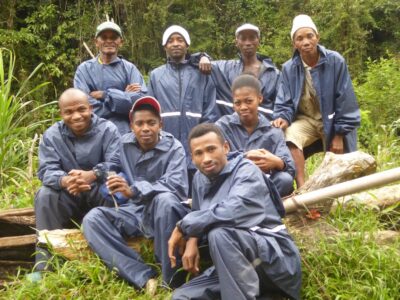
- Conservation threats and the context of Madagascar. Madagascar is one of the world’s financially poorest countries, and this leads to many challenges for lemurs. Forests are often cleared for farming and lemurs are hunted for food. Southern Madagascar experiences extreme drought, and fires across the country often damage protected reserves where lemurs live.
- Conservation solutions in Madagascar. Despite many threats, there are also over 60 conservation organizations working in Madagascar with local people to save lemurs from extinction. They are managing parks and reserves, planting trees, and building fire breaks to stop fires from entering lemur habitat. They are also teaching local people about lemurs and how to protect them, empowering local scientists, and creating sustainable businesses like ecotourism. More on threats and solutions.
- Be respectful of Malagasy people. Be careful when discussing Madagascar’s people that your phrasing does not blame them for conservation issues. Malagasy people are an important part of the solutions for lemurs, and we must empower, support, and respect them when discussing conservation in Madagascar. Some of LCN’s most inspiring member organizations are founded and run by Malagasy people! Learn more about the Malagasy organization, GERP.
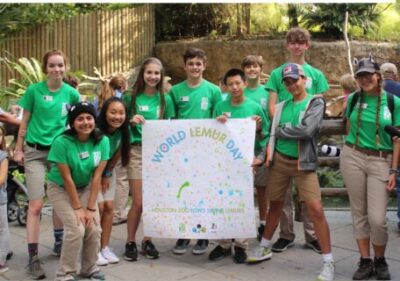
How People and Zoos Can Help Lemurs
- How zoos help lemurs. Zoos that participate in the Species Survival Plan give hope to lemurs, because these animals may one day be able to be reintroduced to the forests of Madagascar. Animal populations at zoos also help scientists learn about the animals and what they need to survive in the wild. More on how zoos help.
- How people can help lemurs. People can help in many ways, including learning about lemurs and telling your friends, volunteering at your local zoo or for a lemur conservation organization, and more. More ways people can help.
- World Lemur Day and the World Lemur Festival. People around the world celebrate lemurs every October for the World Lemur Festival. It is inspiring for people in Madagascar to see the world celebrating lemurs, and these events help conservation organizations raise awareness for lemurs and inspire people to love them.
More Resources
Sources
Gusset, M., & Dick, G. (2011). The global reach of zoos and aquariums in visitor numbers and conservation expenditures. Zoo Biology, 30(5), 566-569.
Ojala, M. (2012). Hope and climate change: The importance of hope for environmental engagement among young people. Environmental Education Research, 18(5), 625-642.
Park, A., Williams, E., & Zurba, M. (2020). Understanding hope and what it means for the future of conservation. Biological Conservation, 244, 108507.
Schwitzer, C., Mittermeier, R. A., Davies, N., Johnson, S., Ratsimbazafy, J., Razafindramanana, J., … & Rajaobelina, S. (2013). Lemurs of Madagascar: A strategy for their conservation 2013–2016. Bristol, UK: IUCN SSC Primate Specialist Group, Bristol Conservation and Science Foundation, and Conservation International, 185.
Wallis, J. (2018). The role of tourism in securing a sustainable existence for primates. Primatology, Biocultural Diversity and Sustainable Development in Tropical Forests.
Waters, S., Setchell, J. M., Maréchal, L., Oram, F., & Cheyne, S. M. (2021). Best Practice Guidelines for Responsible Images of Non-Human Primates.

